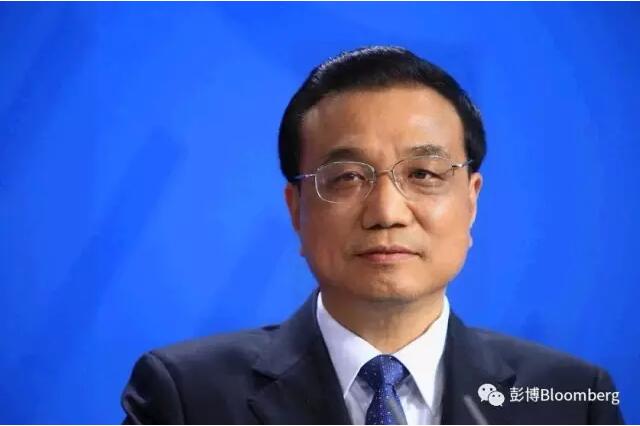
英文版《彭博商業周刊》(2017年1月30日-2月5日)刊載了中華人民共和國國務院總理李克強的英文署名文章。雜志于2017年1月27日出版。
以下為中文譯文。
作者:中華人民共和國國務院總理李克強
這是一個充滿考驗的時代。
國際金融危機爆發近十年后,世界經濟仍未能完全擺脫其負面影響,中國也面臨不少挑戰。但我們選擇迎難而上。
我們堅信,開放的經濟符合各方利益,對中國如此,對世界亦然。世界各國是命運共同體,相互間開展貿易與投資合作,遠比相互攻訐、高筑壁壘好。出現分歧,本著相互尊重、平等相待的精神商談解決之道,最符合各方利益。
中國堅定支持世界貿易組織和一切旨在推動包容發展的自貿安排。經濟全球化在前所未有的規模上推動了財富的創造和分享,但這一進程也存在問題,主要是在分享方面。只要各國齊心協力,確保所有人都能從全球化中受益,這些問題是完全可以解決的。
在國內,中國政府在處理同市場關系時采取介入更少、更加平衡的方式。為改善中國的營商環境,我們推動簡政放權、放管結合、優化服務等改革,著力防范各種風險隱患,并將不斷完善營改增改革,確保各行業稅負只減不增。
我們將開放更多行業,并放寬更多行業準入。我們正在對基于負面清單管理模式的外資準入制度進行推廣前的試點,未來還將出臺更多措施,讓所有在華注冊的企業都能一視同仁享受政策。在西部欠發達地區或東北老工業基地投資的企業,還可享受更多優惠政策。
政府將繼續投資基礎設施建設,增加國內需求。更多資源將投向鄉村公路、供排水系統和信息網絡建設等以往并不顯眼的短板領域。在改善硬件的同時,努力加強民生保障,特別是對弱勢群體的保障力度。
結構性改革正在收到成效。2016年,中國壓減落后過剩鋼鐵產能6500萬噸以上、煤炭產能2.9億噸以上。我們計劃在三至五年內鋼鐵、煤炭產能分別壓減1.4億噸和8億噸,使相關行業恢復更加健康的基本面。與此同時,政府還聯手企業,為轉崗人員提供多種形式的再培訓。僅2016年,轉崗安置人數就達到70萬。
中國經濟增長的新動能正在蓬勃興起。服務業占經濟總量的比重已超過制造業,領軍地位更加鞏固,消費對GDP增長的貢獻率在六成以上。新動能不僅創造新價值,也提升了傳統產業的效率和競爭力,推動高技術產業和裝備制造業增長領跑整個工業。
大眾創業、萬眾創新向縱深發展。新的商業模式不斷涌現,此前許多意想不到的服務正日益成為生活中隨處可享的便利。一個典型的例子是建立在移動互聯網基礎上的共享經濟。除了訂餐、約車等基本服務,家政、健康咨詢等很多新服務也都只需輕點手機就可獲得。
數字最能說明問題。去年中國經濟實現了6.7%的健康增長。更重要的是,盡管產業進一步優化整合、工業機器人應用日益廣泛,中國就業市場的彈性不降反增。2013年以來,我們每年新增城鎮就業1300多萬人,失業率當前處于多年來最低水平。
在一個不確定性層出不窮的世界上,中國是穩定之錨、增長之源,并始終如一傳遞深化改革、擴大開放和推進自由貿易的積極信息。時局不易,但正因如此,我們更不應忽視這些中國和世界從中受益良多的原則。
(李克強自2013年3月起擔任中華人民共和國國務院總理。)
以下為英文原文。
This is a testing time.
Almost a decade on, the world is still reeling from the fallout of the global financial crisis. China faces its fair share of challenges, but we choose to confront them head on.
Above all, we remain convinced that economic openness serves everyone better, at home and abroad. The world is a community of shared destiny. It’s far preferable for countries to trade goods and services and bond through investment partnerships than to trade barbs and build barriers. Should differences arise, it behooves us all to discuss them with respect and a keen sense of equality.
China stands resolute with the World Trade Organization and multilateral free-trade agreements designed to be inclusive. Economic globalization has enabled the creation and sharing of wealth on an unprecedented scale. There are problems, too, more on the sharing side. These can be addressed, but only if countries work together to ensure that a rising tide really does lift all boats.
At home, the government is opting for a lighter, more balanced touch while engaging the market. To make doing business in China easier, the state is consolidating administrative reviews and focusing more on compliance oversight, risk preparedness, and providing services. We keep improving implementation of the VAT reform to make sure that tax costs drop across the board.
We are opening new sectors of the economy to investment and widening access to many others. We are piloting a “negative list” model before a nationwide rollout, where investment access is assumed unless specifically restricted. More measures are in the pipeline to ensure all businesses registered in China are treated equally. Companies can enjoy additional incentives if they invest in less-developed western regions or in the northeastern industrial belt.
While the government is continuing to invest in infrastructure to boost domestic demand, more resources are going to improving rural roads, water supply, sewage systems, and information networks—areas that traditionally haven’t been as visible. In parallel with such hardware improvements, we’re continuing efforts to expand the safety net, not least for the more vulnerable members of society.
Structural reforms are showing results.
In 2016, China shed more than 65 million and 290 million tons of inefficient steel and coal-mining capacity, respectively. We plan to raise those numbers to 140 million and 800 million tons within the next three to five years to restore healthier fundamentals to those industries. Meanwhile, the government is working with business communities on various retraining programs. In 2016 alone, 700,000 workers once employed in downsized industries moved on to new jobs.
At the same time, new growth drivers are emerging strong. Services, which have surpassed manufacturing as a share of the economy, keep consolidating their lead. Consumption now contributes more than 60 percent of the growth in China’s gross domestic product. While creating new value, these drivers are also boosting the efficiency and competitiveness of traditional sectors, with high-tech and equipment manufacturing leading industrial expansion.
Entrepreneurship and innovation are taking root. Meanwhile, new business models are thriving, transforming many previously unimaginable services into daily conveniences. The mobile-internet-enabled sharing economy is only one obvious case. Besides ordering takeout or hailing cars, housekeeping, health consulting, and many more services are now just a swipe away.
The numbers bear out the case. The economy grew a healthy 6.7 percent last year. More important, despite industrial consolidation and ever more robots finding their way into factories, the job market is proving resilient. The economy has added more than 13 million jobs every year since 2013. Unemployment stands at a multiyear low.
In a world with a plethora of uncertainties, China offers an anchor of stability and growth with its consistent message of support for reform, openness, and free trade. The times may be difficult. But that’s all the more reason not to lose sight of these principles, which have stood China—and the world—in good stead.
Li has been the premier of the People’s Republic of China since March 2013.
[責任編輯:齊昕]